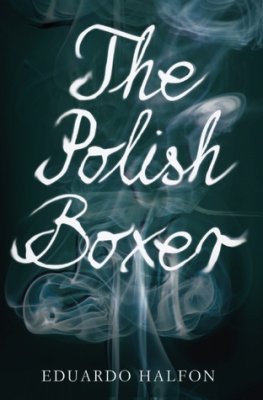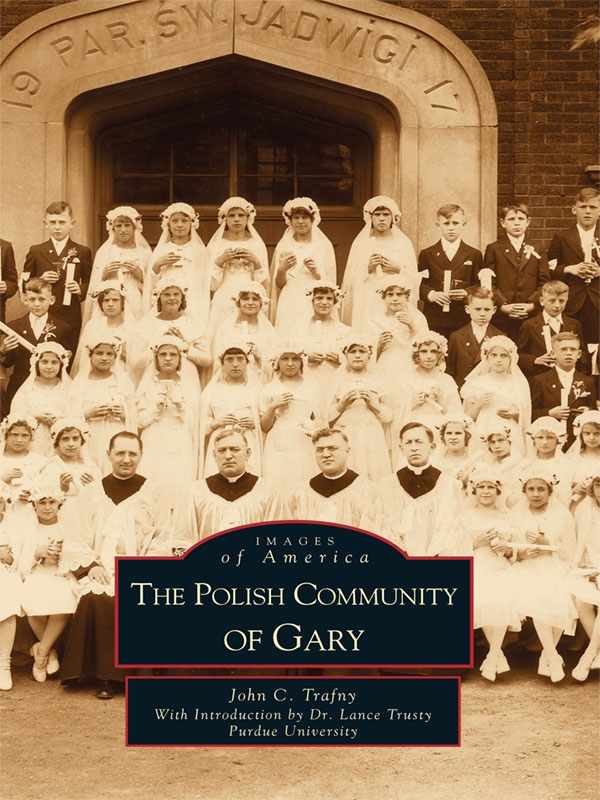The Heart of Polonia is more than the history of St. Hedwig Parish church. It is also the story of Garys Polish immigrants and their many American descendants journey of assimilation into American society. It presents the histories of working people who toiled in the mills, raised families, built a church, and established a community. Their stories emerged from lengthy detective work in local libraries, the Calumet Regional Archives of Indiana University Northwest, and the record of the Diocese of Gary. Bits and pieces of information were drawn from documents preserved at St. Hedwig Parish and from personal interviews. As I learned much about my own family and heritage, the process was also a personal journey.
The late Dr. Edward Zivich of Calumet College of St. Joseph first sparked my interest in local history through his course The Immigrant Experience . Dr. Lance Trusty of Purdue University Calumet provided encouragement and editorial assistance. Steve McShane, director of the Calumet Regional Archives, recommended many valuable sources. The professional staffs of the Gary and Hammond Public Libraries and the Diocese of Gary were of great assistance. I would also like to thank Debbie Ackerman for her assistance with the computer, and Arcadia Publishing for taking on this project. Thanks go to Mike Sharp for restoring old pictures of the parish. My sister, Diane Trafny Greenwood, typed the manuscript, and Wanda, my mother, helped with the Polish-English translations. My father, the late Steve Trafny, and aunt, Helen Lis, provided a great deal of family history for a research paper that I did on the subject in 1975.
Helen Zielinski, Henry and Evelyn Lisek, and Dennis Noskoskie provided valuable information about the parish. Other helpful parishioners include John Peck, Alice Gurniewicz, John Murajda, Bogdan Pankiw, Charlotte Angela Aldrich, Anna Kalicki, Edward Kaminski, Stanley Dabrowski, Helen Dzienslaw, Maria Mastalski, and Margaret Oleska. Several members of the Franciscan Order kindly offered their assistance and their prayers, especially Sisters Elaine Bartkowski, Virginette Rokicki, Lillian Szura, Clarent Marie Urbannowicz, and Emilie Marie Lesniak.
Of course no historical research can be perfect, and the author assumes full responsibility for any and all errors or omissions herein.
BIBLIOGRAPHY
Bodnar, John Roger Simons, and Weber, Michael P. Lives of Their Own, Blacks, Italians, and
Poles in Pittsburgh, 19001960 . 1983.
Brody, David. Steelworkers in America, the Nonunion Era . 1960.
Bukowczyk, John J. And My Children Did Not Know Me, A History of Polish-Americans . 1987.
Cohen, Ronald D., and Lane, James B. Gary, A Pictorial History . 1983.
Dubofsky, Melvyn, ed. American Labor Since the New Deal . 1971.
Federal Writers Project, the Calumet Region Historical Guide Compiled by the Workers of the Writers Program of the W.P.A . 1939.
Glaab, Charles N., and Brown, Theodore A. A History of Urban America . 1976.
Golab, Caroline. Immigrant Destinations . 1977.
Greer, Edward. Big Steel, Black Power, and Corporate Power in Gary, Indiana . 1979.
Hernandez, Ernie. Ethnics in Northwest Indiana . 1984.
Knawa, Sister Anne Marie. As God Shall Ordain, A History of the Franciscan Sister of Chicago, 18941987 . 1989.
Lane, James B. A City of the Century, A History of Gary, Indiana . 1978.
Liptak, Delores, R.S.M. Immigrants and Their Church . 1989.
Mirecki-Piergie, Mary. A Collection of Polish Proverbs and Sayings . 1989.
Mohl, Raymond A., and Betten, Neil. Steel City, Urban and Ethnic Patterns in Gary, Indiana 19061950 . 1986.
Noll, the Most Reverend John F. The Diocese of Fort Wayne, Fragments of History, Vol. II . 1941.
Pacyga, Dominic A. Polish Immigrants and Industrial Chicago, Workers on the South Side, 18801922 . 1991.
Parot, Joseph John. Polish Catholics in Chicago, 18501920, A Religious History . 1981.
Pienkos, Angela T. Ethnic Politics in Urban America, the Polish Experience in Four Cities . 1978.
Taylor, Philip. The Distant Magnet, European Emigration to the U.S.A . 1971.
Taylor, Robert Jr., and McBirney, Connie. People in Indiana, the Ethnic Experience . 1996.
AFTERWARDS
In 1998, my research work on The Polish Community of Gary took me to the Central District, the old neighborhood that my ancestors, and many other families, once called home. It was an area of great contrast. The Polish immigrants were long gone when I began to seek material for my story. Their descendants scattered through the region, and beyond. The old neighborhood bore the scars of many years of economic decline and unkempt political promises. Conditions were similar to those of many old immigrant neighborhoods throughout urban America.
I found much of the immediate area surrounding St. Hedwig Church consumed by the urban blight so common in many of the nations older cities. Burned-out and crumbling structures stood as ghostly reminders of an era that once was. Many of the old buildings were vacant, abandoned over a generation ago. In other places, weed strewn vacant lots were all that remained of once-thriving establishments such as the Pennsylvania Bakery, Pawinski Funeral Home, and the Silver Bell Club.
My perception of the community changed as I traveled along 15th Avenue. Newer, split-level ranch homes intermixed with older residential structures. The tree-lined streets north of 15th Avenue presented a stable, residential community of well-kept brick houses and apartments. Further west, I discovered signs of gradual renewal along Broadway, between 11th and 15th Avenues. A new strip mall was in operation across the street from the police station, while another was near completion a few blocks to the north. New apartments and townhouses were just west of Broadway, some along the very streets that long ago were part of the infamous Patch. Even the area near St. Hedwig Church had undergone some improvement as streets were resurfaced, and a number of old buildings demolished.
In the midst of ruin and renewal stood St. Hedwig Church continuing its spiritual mission. Parishioners, as well as many residents of the Central District, looked upon the church as survivor of the challenges the neighborhood faced over the years. St. Hedwig was a monument to the American success story as Polish immigrants and their children from the Central District toiled in the mills and struggled to raise families while on their journey to mainstream America. Assimilation was the goal and St. Hedwig School was the vehicle that took them their. The children were educated, became successful, and moved on to the suburbs and elsewhere as Americans.
Back in the 1970s, I was assigned to the 3rd Armored Division in West Germany. During my tour of duty there, I had the opportunity to visit many historical sites. Some were churches centuries old and still in use. Europeans respected history and tried to preserve their links to the past. Unfortunately in the United States, grand structures were left to deteriorate and fall to the wrecking ball. New suburban churches often resembled convention halls and not houses of worship. Architectural and historical ties to the past were lost forever.
Long ago immigrant groups built their own national churches in the inner cities, often within a few blocks of one another. Each group wanted their own house of worship where they shared a common language and traditions with their neighbors. The closeness was further enhanced, as it was an era of walking to church or taking a streetcar. With the development of the interstate highway system and the growth of the suburbs, Catholic churches in the regions cities were left with fewer members. Financial problems and the shortage of priests presented additional woes. Parish life came to an end at such immigrant Steel City churches as Holy Trinity, Sacred Heart, and St. Casimir. Only St. Hedwig remained in the heart of the city.







